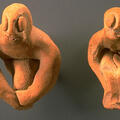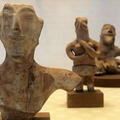Iravatham Mahadevan Passes Away
Iravatham Mahadevan, India's leading expert on the Indus script, and Padmashri award winner (2009), sadly passed away on Monday in Chennai. He was 89. His contributions towards the understanding of early Indian and Tamil scripts were unparalleled; he was also an extremely generous contributor to Harappa.com, one whose scholarship was widely recognized internationally.










